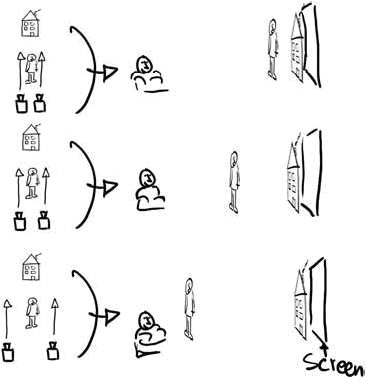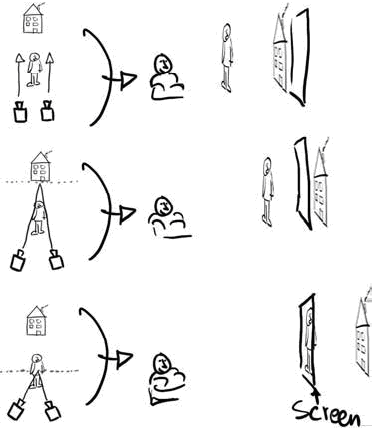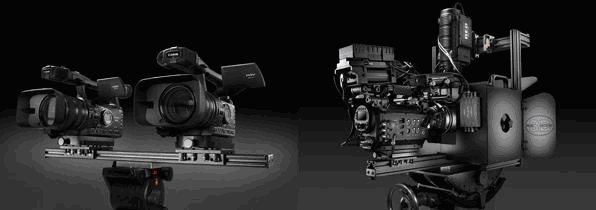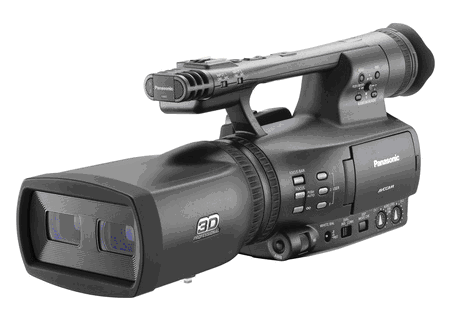3D Video Capture and Display in Brief
3D imaging (or Stereoscopy) is a technique for creating or enhancing the illusion of depth in an image by presenting two offset images separately to the left and right eye of the viewer. Both of these 2D offset images are then combined in the brain to give the perception of 3D depth. Three strategies have been used to accomplish this: have the viewer wear eyeglasses to combine separate images from two offset sources, have the viewer wear eyeglasses to filter offset images from a single source separated to each eye, or have the lightsource split the images directionally into the viewer's eyes (no glasses required). Presently the most popular of these methods is the second one, and this is how 3D in movies such as Avatar is brought to life.
How can you achieve 3D in your production?
The two main ways to capture 3D video at present are by using multiple cameras (preferably identical in type), or by using one camera with (usually) two lenses and a separate image sensor or film frame for each lens. Both methods create the depth of field and therefore the 3D using 2 main principles, namely Interocular distance, and Convergence.
Possibly the most important principle; Interocular distance is the distance between the camera lenses. The effect of varying this distance allows things to appear closer to or further away from the screen on which the footage is viewed. The narrower the Interocular distance the closer to the screen the object being filmed appears; as the distance is widened the subject appears closer to the viewer. Setting this value is an artistic and technical decision linked to lens choice, desired 3D effect, and the eventual release format of the movie. Interocular distance is also referred to as stereo base, interaxial distance or entraxe.

This diagram illustrates the effect of varying the Interocular distance.
If Interocular distance is the most important principle, convergence is a close second. Convergence is the angling of the cameras or lenses to shift the whole scene ‘in front’ of, or ‘behind’ the screen. With parallel cameras the whole scene will appear to be ‘in front’ of the screen, with only objects in the infinite distance to the camera not showing any 3D disparity. Any object that is at the point of convergence will show no 3D disparity and will appear in its plane, so if you converge the axes' on the foremost object, the whole scene will appear 'behind' the screen.

This diagram illustrates the effect of varying the point of convergence.
Now you have the basics of using cameras to create 3D images, which type of camera is right for you?
The answer to this will depend of course somewhat on budget, but will also be affected by which media you wish to shoot on along with other factors, such as space and positioning, and the look you are trying to achieve. The good news here is that there are many cameras suitable for 3D acquisition from the Red One down through Sony’s PDW-700, to the Canon XF305, even the Canon 5D can be used. This makes 3D acquisition affordable on a wedding video budget right up to a 3D feature film sized budget!
You will of course need two cameras, and there are various ways you can mount them in order to create your stereoscopic rig. Two of the more popular ways of doing this are side by side mounting, and mounting one camera vertically and one horizontally, achieving stereoscopy by means of a beam splitter (essentially a mirror).
On the left is an example of a side by side rig by 3D Film Factory using the Canon XH G1S, and on the right is a beam splitter type rig also by 3D Film Factory using the Red One camera.

For greater flexibility and mobility when on a shoot, or when a large or side-by-side rig are not appropriate, you could also use a camera like the Panasonic AG-3DA1. This type of camera features two lenses, camera head and recorder section integrated into one body (shown below).

So now you have your cameras chosen, here are a few bits of good advice to bear in mind.
- Not all subjects are suitable for 3D. A good story or production will sell itself so 3D should be used to enhance a production and not be expected to ‘carry’ it.
- Plan your shots well in advance. 3D shooting is not the kind of shooting that lends itself well to improvisation as a result of, amongst other things, the need to precisely measure the Interocular distance and Convergence.
- Wherever possible try to view your shots on a monitoring system of the same size as the intended final viewing platform. Due to the nature of the optics involved 3D does not up or downscale well, and badly rendered 3D can even make your audience nauseous!
Finally you may be interested to know that we primarily enjoy 3D because it is the natural form of vision for predators. Stereoscopic 3D vision provides acute trajectory interception and impact point computation. Animals lower on the food chain tend to have wide-angle vision, to look for danger. This is why watching a 3D movie gives us a feeling of visual completeness that was possibly lacking in 2D films, despite the tremendous efforts and skills of the cinematographers.